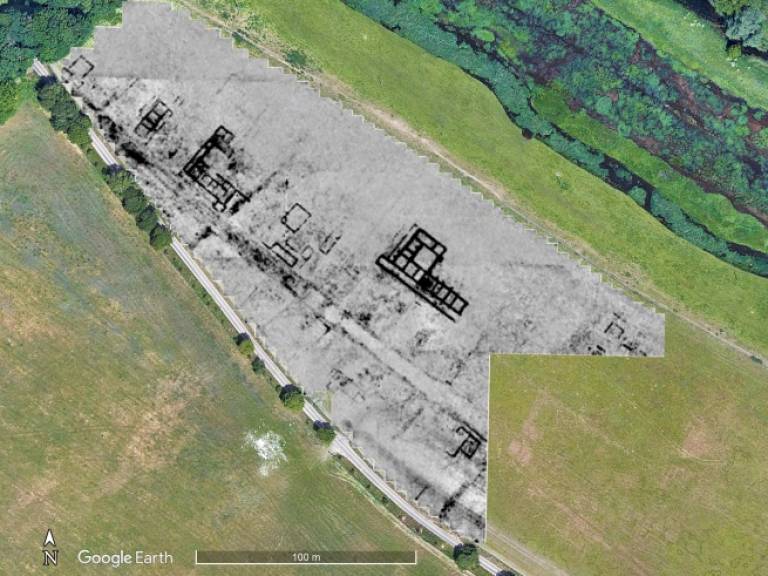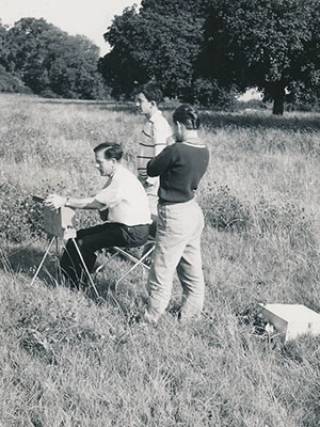Sensing the Iron Age and Roman Past: Verulamium 2021
24 August 2021
Kris Lockyear (UCL Institute of Archaeology) has been documenting his community archaeology geophysics project in an online blog, with interesting results being uncovered from Verulamium.

Kris Lockyear has been continuing his community archaeology geophysics project across Hertfordshire with surveying taking place this summer at Verulamium.
The Verulamium survey started in 2013 as part of a one-year AHRC Community Heritage Development award to Kris for the project Sensing the late Iron Age and Roman Past: geophysics and the landscape of Hertfordshire.
Since then, surveys have been ongoing, supported by the loan of equipment from the Institute of Archaeology including new ground penetrating radar (GPR) equipment - one of two machines being used this season. The group (the Community Archaeology Geophysics Group) have surveyed approximately 35 sites around Hertfordshire and nearby counties - in all weathers!
According to Kris:
“The group is excited to continue the survey of the Roman city of Verulamium after a long break due to Covid-19. We have been obtaining some excellent results, and will be working there until the end of the month."

The Verulamium survey is uncovering significant information about private and public buildings, aqueducts and streets. One feature is the confusingly named “1955 ditch”, so-called because Sheppard Frere excavated a section of it under Insula XX, Building 1 in 1955. It is the late first century boundary of the town, dating to approximately 20 years after Boudicca burnt the city in AD 61.
Kris has been in contact with Charles Higham who worked at Verulamium with Frere in 1958 and 1959. In 1959 Charles had helped Martin Aitkin trace the line of the 1955 ditch using the then new technique of proton magnetometry, which Aitkin had pioneered at Durobrivae in 1958.
This initiative is a collaboration between the UCL Institute of Archaeology and a number of local heritage groups, including the Welwyn Archaeological Society, the North Herts Archaeological Society, the East Herts Archaeological Society, the St. Albans and Hertfordshire Architectural and Archaeological Society, The Chess Valley Archaeological and Historical Society, the Leighton Buzzard and District Archaeological and Historical Society, the Welwyn Hatfield Museum Service, St. Albans Museum Service, St. Albans District Council, the Hertfordshire Historic Environment Department and the Wheathampstead Historical Society.
Kris' adventure in Hertfordshire archaeology continues....
 Close
Close

